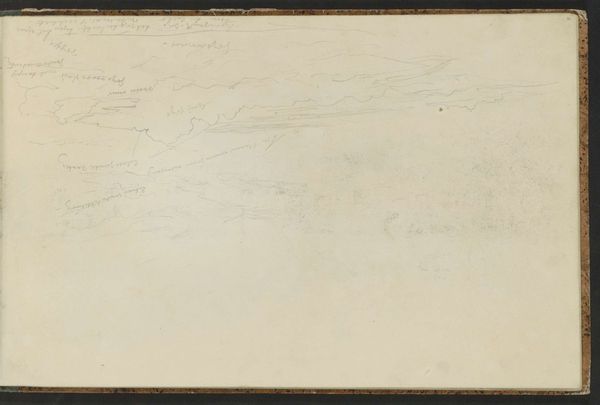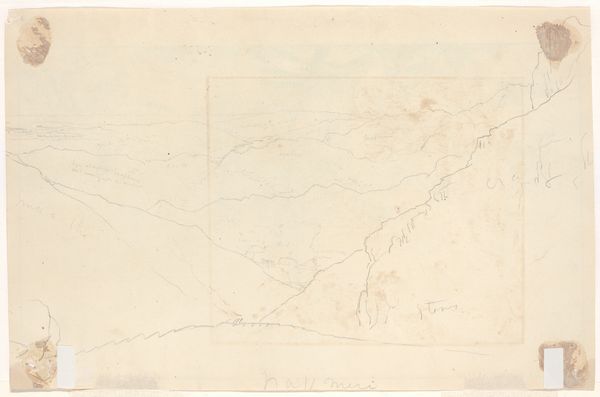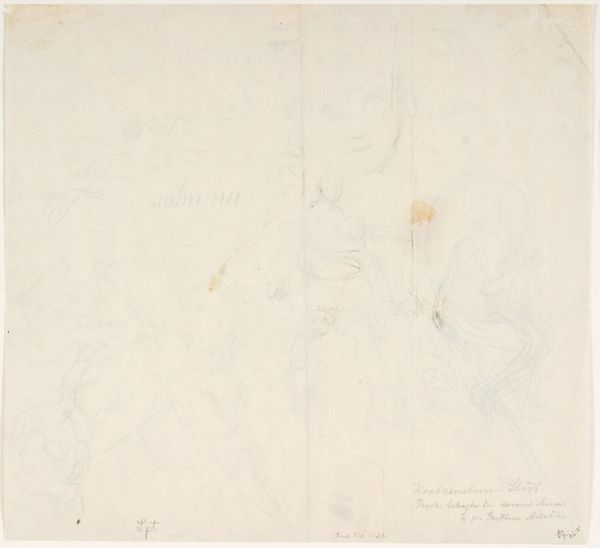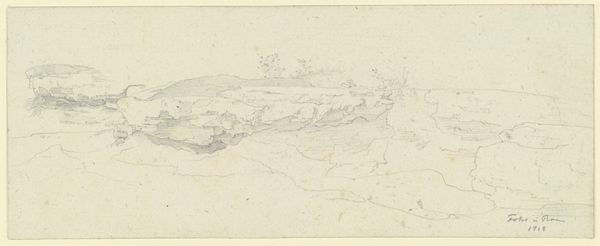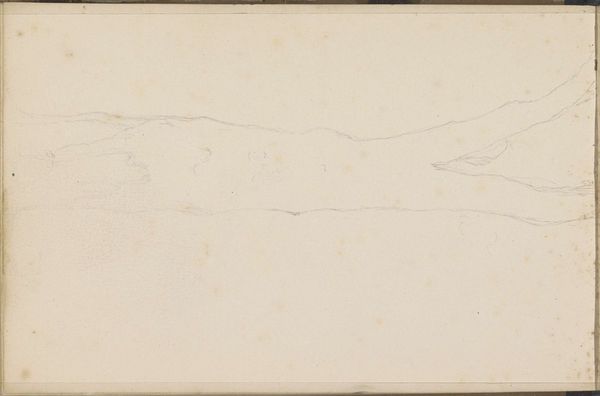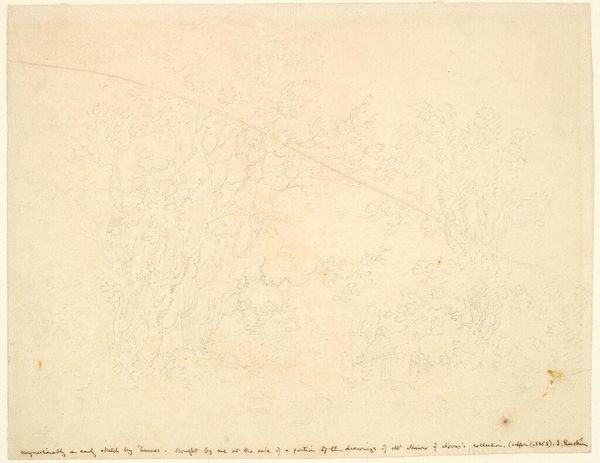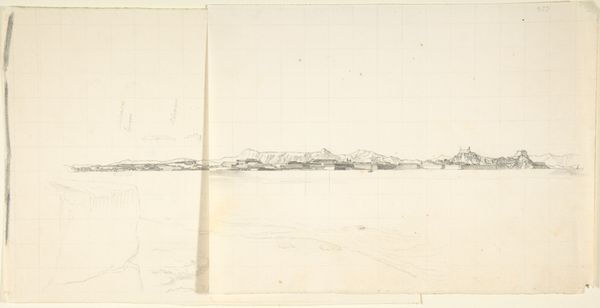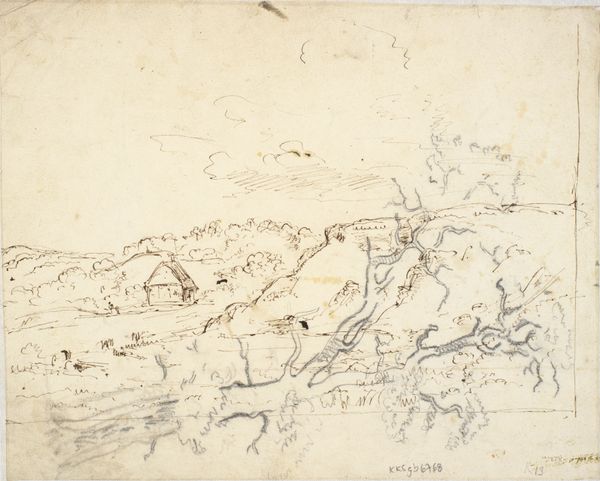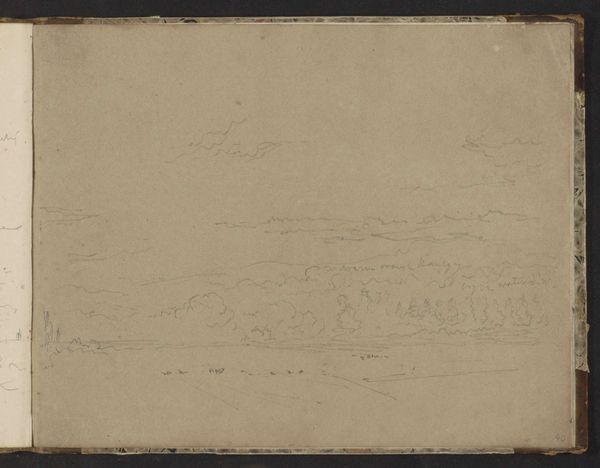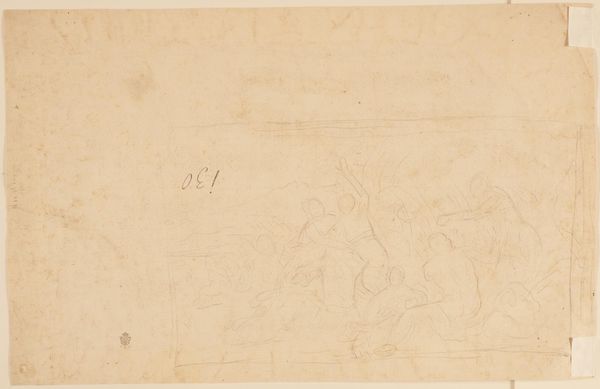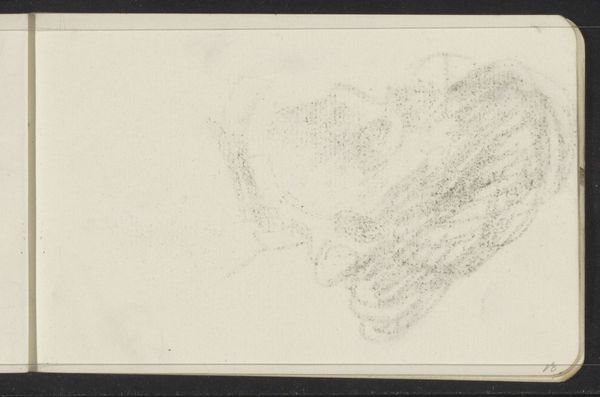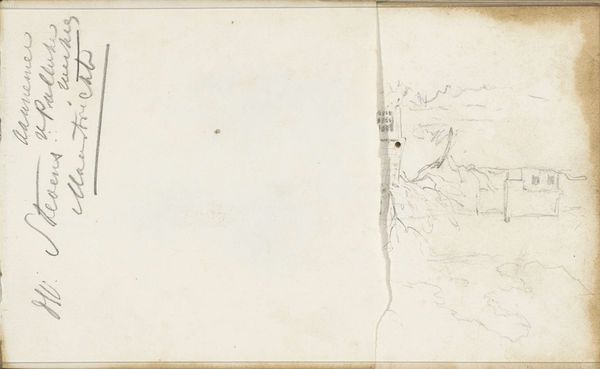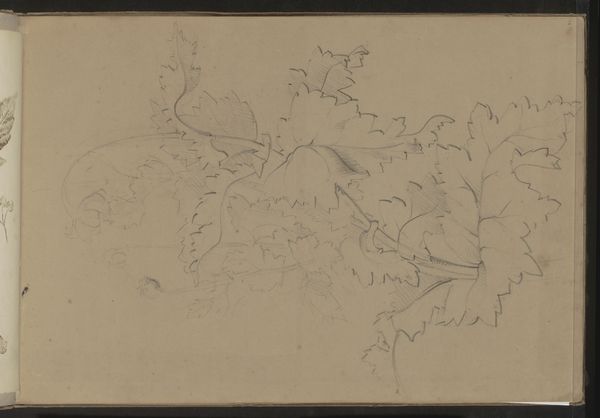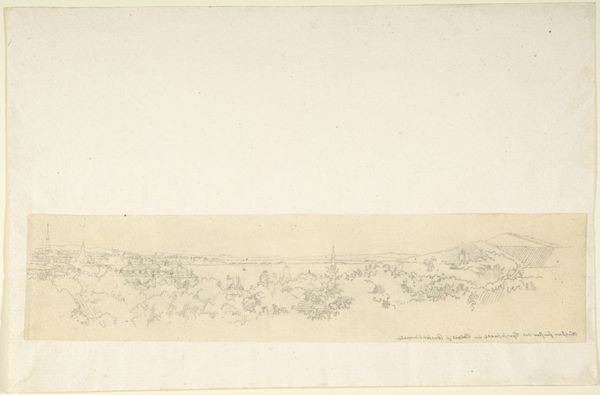
drawing, plein-air, pencil, graphite
#
drawing
#
plein-air
#
landscape
#
sketch
#
romanticism
#
pencil
#
graphite
Copyright: Public Domain
Editor: So, this drawing, "In the Monti Sabini" by August Lucas, dates from 1830-1831 and is done in pencil— a plein-air sketch. What strikes me is how delicate the lines are; it feels so ephemeral, almost like a memory fading. What do you see in this piece? Curator: I see a raw record of artistic labor and the materiality of its making. Look closely – it is pencil on paper. We have here not only an artistic creation, but also evidence of the very means by which this representation of the landscape was produced. The lines capture both the grandeur of the landscape and the mundane process of sketching en plein air. Do you consider how the use of graphite, as a relatively inexpensive and portable medium, affected the artist's process and the dissemination of landscape imagery during this period? Editor: That's fascinating! I hadn't thought about the economics and accessibility of the medium itself. Does that impact the value of plein air sketches as "high art"? Curator: Precisely. Traditional hierarchies place oil paintings over sketches because of time spent and materials used. But this work asks us to reconsider; the *act* of directly engaging with and transcribing a specific location and its social context becomes elevated, irrespective of the final material cost. Think about how Romanticism emphasized experience and connection with nature – and consider that this piece captures the artist's raw labor *within* that setting. Editor: So, the 'value' is also tied to the performance, the 'doing,' rather than the completed object only. It reframes my perspective entirely. Curator: It invites a crucial materialist reading, one that examines the physical act of production as an essential component to both its aesthetic and historical meaning. What's more, it bridges the supposed divide between 'high art' and the material conditions in which it was realized. Editor: I appreciate learning how focusing on material realities changes the way we think about art history and artistic value. Thanks for illuminating that for me!
Comments
No comments
Be the first to comment and join the conversation on the ultimate creative platform.
